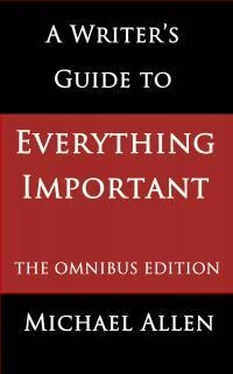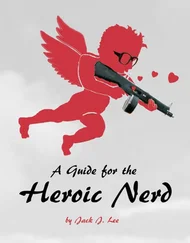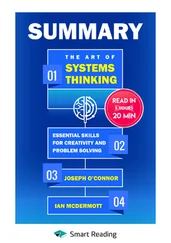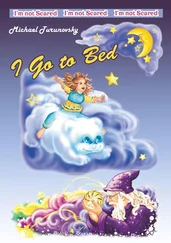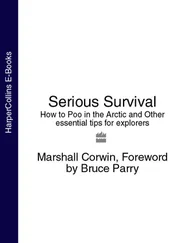The most famous such device is probably the stream-of-consciousness technique, also known as the interior monologue.
Forty years ago I owned a book about this subject, but I long since passed it on to someone. Should I ever wish to replace it, Amazon currently offers 72 books with ‘stream of consciousness’ in the title; so it’s still a hot topic in the Eng. Lit. departments. Meanwhile, If you want a shorter explanation of what’s involved, Wikipedia will provide one.
13.1 Ulysses
Perhaps the most famous use of the stream-of-conscious technique occurs towards the end of James Joyce’s novel Ulysses . Here the leading character’s wife, Molly Bloom, lies in bed and tries to go to sleep; as she does so, her mind wanders all over the day’s events, and, for that matter, the events of her whole life. Her thoughts are offered to us in an archetypical stream-of-consciousness manner: the text is presented almost entirely without punctuation, drifting aimlessly (it appears) as she hovers on the brink of sleep. Here is a passage to give you the flavour:
Yes because he never did a thing like that before as ask to get his breakfast in bed with a couple of eggs since the City Arms hotel when he used to be pretending to be laid up with a sick voice doing his highness to make himself interesting to that old faggot Mrs Riordan that he thought he had a great leg of and she never left us a farthing all for masses for herself
And so it continues for about 45 pages in most editions. It is said, if anyone cares, that Molly’s speech contains what was, for quite a while, the longest sentence in English literature at 4,391 words.
Well, as you can see, this is all pretty fancy-pants stuff, and you can understand how it has appealed to all the clever young men and women in the universities over the years. But it is not, I suggest, a style, or device, which is of much practical value to the average writer.
When I was a young man myself, I too experimented with the stream-of consciousness technique, and I found it deceptively easy to write. You just sit there and let it all flow out. Most young men in that position, and at that stage of their life, consider themselves to be geniuses and are therefore convinced that everything they write is automatically good – well, actually, it’s brilliant. Or so they think. And it is just possible that, for a week or two, I was a young man who believed that about himself too. But it wasn’t true for me, and it won’t be true for you.
The only question we really need to ask ourselves is this: does the stream-of-consciousness technique have any practical value in anything but the most obscure and experimental reaches of literary fiction? And the answer is: just occasionally, it might. But these occasions are exceptions to the rule, and my advice is to not to meddle with it.
13.2 Lie Down in Darkness
In a lifetime of reading fiction, I can think of only two uses of this technique in any novel which might reasonably be called a mainstream book.
In 1951, William Styron published Lie Down in Darkness . This is undoubtedly a literary novel, but I think it is fair to say that, in addition to being widely admired by the critics, it also appealed to a general readership.
The central figure is a young woman called Peyton, who eventually commits suicide, and the penultimate section of the novel is designed to reveal her deteriorating mental condition. Here’s a brief extract, taken at random:
Chimes in my drowning soul: oh, no, God, I thought, he’ll come back with me. And I thought, lifting the handbag to my ear, the clock ticking inside precise and steady as before: here all our guilt will disappear, among the ordered levers and wheels, in the aqueous ruby-glinting sun.
You will notice at once that, unlike James Joyce, William Styron does use punctuation, and the text is therefore relatively easy to read. Paragraph breaks, however, are not to be found. Length: 50 pages.
13.3 The Key to Rebecca
Finally, it is only fair that I should mention the one single instance that I can recall of the stream-of-consciousness technique being used in an out-and-out commercial novel. This is in a novel by Ken Follett, entitled The Key to Rebecca.
The Key to Rebecca was first published in 1978. Follett was by then a highly experienced writer, though his early work was published under a pseudonym. He had also worked as Deputy Managing Director of a publishing firm. So, by the time he came to write this novel, Follett knew his business, and The Key to Rebecca won an Edgar award for best crime novel of the year.
In genre terms, the novel is an absolutely orthodox thriller, set in World War II. It is written in a middlebrow, middle-class manner for the kind of readers who (at that time) were enjoying Ian Fleming, James Bond, Len Deighton, Frederick Forsyth, and similar British thriller writers. And yet, towards the end, Mr Follett indulges in a modernist literary device to heighten the suspense. And it works very well.
The hero is one Major Vandam. By the time we get to Chapter 26, the villain, Alex Wolff, has Vandam’s son in his control. Another leading character is a ‘beautiful courtesan’, Elene, who is on Vandam’s side.
Unexpectedly – well I didn’t expect it, anyway – Follett slips into the stream-of-consciousness technique, with interior monologues from some of the central characters. He begins with the bad guy, Alex Wolff.
I was afraid I might lose Elene and the boy on the platform, among all the hundreds of peasants, barefoot in their dirty galabiyas, carrying boxes tied with string, chickens in crates, sitting on the platform eating their breakfast, a fat mother in black handing out boiled eggs and pita bread and caked rice to her husband and sons, cousins and daughters and in-laws; smart idea of mine, to hold the boy’s hand – if I keep him close by, Elene will follow; smart idea, I have smart ideas, Christ I’m smart, smarter than Vandam, eat your heart out, Major Vandam, I’ve got your son.
And so on. As you can see, this is different from a normal third-person account. We are taken inside Wolff’s head, and are presented with his drifting thoughts. The punctuation is reasonably orthodox, but the sentences are longer than typical for a Follett novel.
After a page or two of this, we go into the head of Vandam’s son, for the same kind of interior monologue, but this time from a small boy:
I will not be sick , I will not be sick , I will not be sick . The train says it for me, rattling on the tracks. I’m too old to throw up on trains now, I used to do that when I was eight. Dad took me to Alexandria, bought me candy and oranges and lemonade, I ate too much, don’t think about it, it makes me ill to think about it, Dad said it wasn’t my fault it was his, but I always used to feel sick even if I didn’t eat, today Elene bought chocolate but I said no, thanks, I’m pretty grown-up to say no to chocolate…
And finally, of course, we learn what Elene is thinking:
Egypt is only thirty miles wide, really: the rest is desert. What am I going to do? That chill, deep in my chest, every time I look at Wolff. The way he stares at Billy. The gleam in his eye. His restlessness: the way he looks out of the window, then around the carriage, then at Billy, then at me, then at Billy again, always with that gleam in his eye, the look of triumph. I should comfort Billy. I wish I knew more about boys, I had four sisters.
This is all very fine in its way. As you read the book for the first time, you will take these passages in your stride, particularly as they come at a point when you already know the characters well.
Nevertheless, I stick to my advice. Do not try this at home. Not, at any rate, until you have written a million words of fiction, and have perhaps studied the technique in greater depth. Until then it remains a stylistic or narrative device (I don’t mind which you call it) which is best left to others. The others will include those who are determined to make a name for themselves in literary circles (and good luck with that, guys), and those with a sublime understanding of human psychology. Styron, I am pretty sure, was heavily influenced by Freud and had read widely in that field: see his interview in the Paris Review (available online).
Читать дальше
